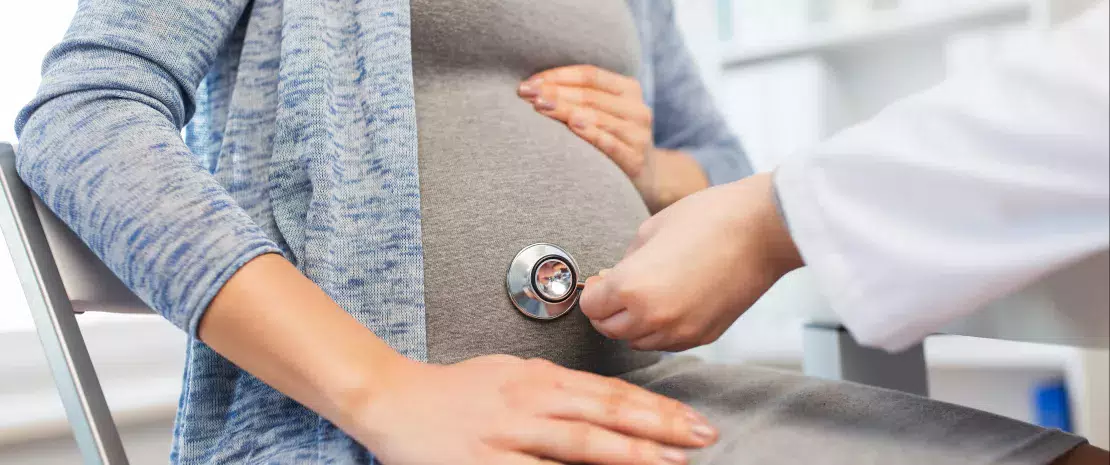Is there a link between miscarriage and the vaginal microbiota?
It's a fairytale-like story: once upon a time, a young woman who was unable to have children and suffered repeated miscarriages received a gift of vaginal microbiota. She then became pregnant a gave birth to a healthy baby.
- Learn all about microbiota
- Microbiota and related conditions
- Act on your microbiota
- Publications
- About the Institute
Healthcare professionals section
Find here your dedicated section
Sources
This article is based on scientific information

About this article
The use of any medicinal products is highly regulated and requires marketing authorization. However, in very rare cases, it is possible to benefit from a last-chance waiver known as "compassionate access". This allows medicinal products to be used without marketing authorization to treat serious or rare diseases for which there is no cure whereas time is running out. A young 30-year-old mother who had suffered a series of pregnancy losses since the birth of her first child, some of them very late (up to 6 months into the pregnancy), was able to obtain a vaginal microbiota transplant after having obtained such access. In other words, healthy microbiota from a female donor was deposited in her vagina in September 2021.
Only 1 in 2 women knows exactly what vaginal flora is (49%) and only 1 in 5 claim to know the exact meaning of the term "vaginal microbiota" (21%).
Use of VMT to treat vaginal dysbiosis
But why? Because this young mother had a very unbalanced vaginal microbiota, dominated not by beneficial (sidenote: Lactobacilli Rod-shaped bacteria whose main characteristic is the production of lactic acid, from where they get the name “lactic acid bacteria”. Lactobacilli are present in the oral, vaginal and gut microbiota of humans, but also in plants and animals. They are found in fermented foods, such as dairy products (e.g. certain cheeses and yoghurts), pickles, sauerkraut, etc. Lactobacilli are also found in probiotics, with certain species recognized for their beneficial properties. W. H. Holzapfel et B. J. Wood, The Genera of Lactic Acid Bacteria, 2, Springer-Verlag, 1st ed. 1995 (2012), 411 p. « The genus Lactobacillus par W. P. Hammes, R. F. Vogel Tannock GW. A special fondness for lactobacilli. Appl Environ Microbiol. 2004 Jun;70(6):3189-94. Smith TJ, Rigassio-Radler D, Denmark R, et al. Effect of Lactobacillus rhamnosus LGG® and Bifidobacterium animalis ssp. lactis BB-12® on health-related quality of life in college students affected by upper respiratory infections. Br J Nutr. 2013 Jun;109(11):1999-2007. ) , as is the case in a healthy vagina, but by the dreaded Gardnerella spp. bacteria, which explains her nine years of itching and abundant, yellow/green, foul-smelling vaginal discharge, which worsened during her attempts to become pregnant and resisted all attempts at treatment...
A pregnancy carried to term
The graft seems to have taken hold very quickly. The dysbiosis and its symptoms disappeared and lactobacilli similar to those of the donor largely colonized the recipient's vagina. In February 2022, the patient became pregnant naturally and the lactobacilli were still living peacefully in her vagina. The only fly in the ointment was the return of Gardnerella spp. in the sixth week of pregnancy. This did not worry the researchers as a second vaginal microbiota transplant was initially planned for two weeks later. However, this transplant was ultimately canceled as the lactobacilli had regained the upper hand on the day of the procedure. And as all's well that ends well, a full-term perfectly healthy baby boy was born via planned cesarean section.
There is more than one kind of transplant....
You’ve probably heard of fecal microbiota transplant (FMT)... And now there is another one, namely vaginal microbiota transplant! In 2019, U.S. researchers laid the groundwork for trials of vaginal microbiota transplantation (VMT) to treat bacterial vaginosis. To test the hypothesis that VMT could be a more effective treatment option, the scientists developed a universal screening approach for 20 women aged 23 to 35. What was their goal? To select donors to find those with a minimal risk of pathogen transmission and "optimal" vaginal microbiota for transplantation
It is nevertheless important not to jump to conclusions or to believe that vaginal microbiota transplantation represents a miracle cure for female infertility. This was just one case, and the patient had another illness that causes miscarriages and whose treatment could explain, in part or in whole, the success of this pregnancy. Put another way, while we shouldn't disregard the results of this case study, we shouldn't get too carried away either.
Vaginal and gut microbiota transplantations can present health risks and must be carried out under medical supervision. Do not try to do them at home!












